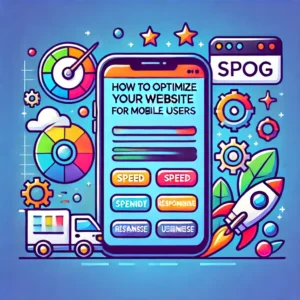Optimizing business operations is essential for maximizing efficiency, reducing costs, and improving overall productivity. Efficient operations can lead to increased profitability, better customer satisfaction, and a stronger competitive edge. Here are some strategies to help you optimize your business operations for maximum efficiency.
1. Analyze and Streamline Processes
The first step in optimizing business operations is to analyze and streamline existing processes. Map out each process to understand the workflow and identify any bottlenecks or inefficiencies. Use process mapping tools and techniques such as flowcharts or value stream mapping. Once you have a clear picture, look for ways to simplify and automate tasks, eliminate redundant steps, and improve overall process flow.
2. Implement Technology Solutions
Leverage technology to enhance efficiency and productivity. Invest in software and tools that can automate routine tasks, improve communication, and streamline operations. This can include project management software, customer relationship management (CRM) systems, enterprise resource planning (ERP) software, and other automation tools. Technology can help reduce manual errors, save time, and provide valuable insights for decision-making.
3. Focus on Employee Training and Development
A well-trained and knowledgeable workforce is crucial for operational efficiency. Provide regular training and development opportunities for your employees to enhance their skills and keep them updated with the latest industry trends and technologies. Encourage continuous learning and create a culture of improvement. Empowered employees are more likely to identify and implement efficient practices within their roles.
4. Improve Communication and Collaboration
Effective communication and collaboration are key to efficient operations. Implement tools and systems that facilitate seamless communication and information sharing among team members. Use collaboration platforms like Slack, Microsoft Teams, or Asana to keep everyone on the same page. Encourage open communication and regular feedback to ensure that issues are addressed promptly and improvements are made continuously.
5. Monitor Key Performance Indicators (KPIs)
Tracking key performance indicators (KPIs) helps you measure the effectiveness of your operations and identify areas for improvement. KPIs can include metrics such as production time, customer satisfaction, employee productivity, and financial performance. Regularly monitor these metrics and use data-driven insights to make informed decisions. Set realistic goals and benchmarks to measure progress and drive continuous improvement.
6. Optimize Inventory Management
Efficient inventory management is crucial for reducing costs and ensuring timely delivery of products. Implement inventory management systems that provide real-time visibility into stock levels, track inventory movements, and forecast demand. Use techniques like just-in-time (JIT) inventory to minimize excess stock and reduce holding costs. Regularly review and adjust inventory levels to match demand patterns.
7. Enhance Customer Service
Improving customer service can lead to increased customer satisfaction and loyalty. Streamline customer service processes by implementing customer support software and self-service options such as FAQs, chatbots, and knowledge bases. Train customer service representatives to handle inquiries efficiently and resolve issues promptly. Satisfied customers are more likely to return and recommend your business to others.
8. Adopt Lean Principles
Lean principles focus on eliminating waste and maximizing value in business processes. Implementing lean methodologies such as Six Sigma, Kaizen, or 5S can help you identify and eliminate non-value-added activities, reduce variability, and improve overall efficiency. Regularly review and refine processes to ensure continuous improvement and sustained efficiency.
9. Outsource Non-Core Activities
Consider outsourcing non-core activities to specialized service providers. Outsourcing tasks such as accounting, IT support, marketing, or manufacturing can free up internal resources and allow your team to focus on core business activities. Ensure that the outsourcing partners are reliable and have a track record of delivering high-quality services.
10. Foster a Culture of Innovation
Encourage a culture of innovation within your organization. Empower employees to suggest new ideas and improvements to existing processes. Create an environment where experimentation and risk-taking are encouraged. Recognize and reward innovative solutions that lead to increased efficiency and productivity. A culture of innovation can drive continuous improvement and keep your operations ahead of the competition.
Conclusion
Optimizing business operations is an ongoing process that requires a strategic and holistic approach. By analyzing and streamlining processes, implementing technology solutions, focusing on employee training, improving communication, monitoring KPIs, optimizing inventory management, enhancing customer service, adopting lean principles, outsourcing non-core activities, and fostering a culture of innovation, you can achieve maximum efficiency and drive sustainable growth. These strategies will help you build a more agile, productive, and competitive organization.







